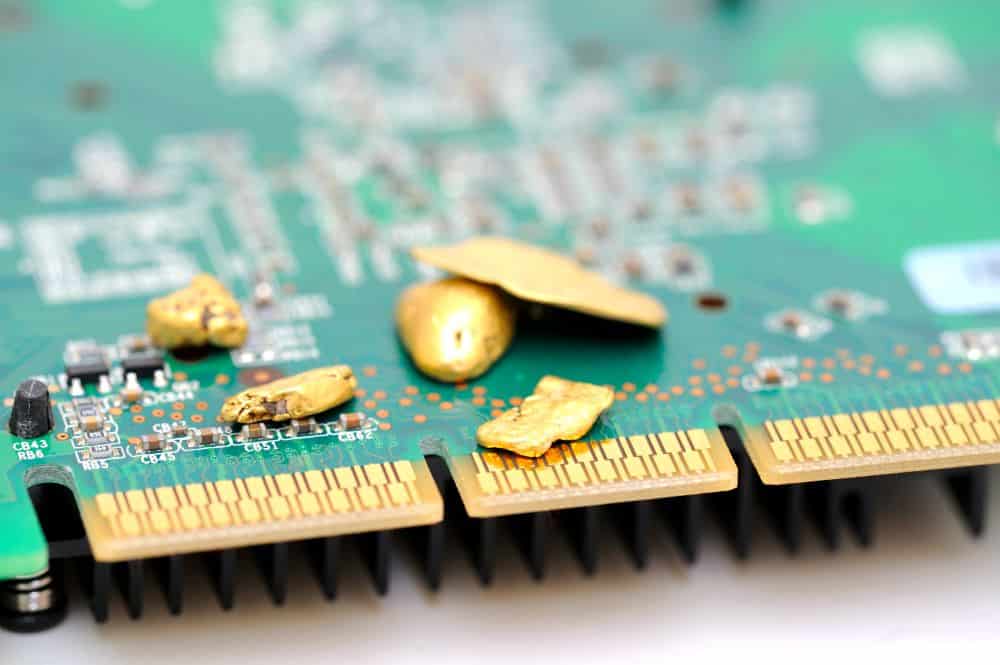
Recovering Gold from E-Waste
In addition to being one of the most valuable metals, gold is also among the most utilised in our electronic devices due to its excellent conductivity, resistance to corrosion, and malleability. The average smartphone is estimated to contain about 0.034 grams of gold, along with other precious metals such as silver, palladium, platinum, and copper. If the metals from one million smartphones were to be recovered, this would yield 16 tonnes of copper, 350 kilograms of silver, 34 kilograms of gold, and 15 kilograms of palladium.
According to the United Nations, 50 million tonnes of electronic waste are generated globally each year. However, official figures suggest that only 20% of this waste is recycled, with the remainder ending up discarded in nature or in landfills. Furthermore, it’s estimated that 7% of all the gold mined globally is contained within unused electronic devices.
Swiss researchers have discovered a pretty straightforward and cost-effective method to extract and recover gold from the circuitry of electronic waste, utilising a by-product of the food industry. Experts think that this innovative method allows for the recovery of US$50 worth of gold at a cost of just US$1, and in an environmentally friendly way.
The team utilised whey, a protein-rich by-product of cheese manufacturing, treating it under acidic conditions and high temperatures to create a mixture of nanoscale protein strands. This mixture was then dried, forming a porous, spongy structure. Afterwards, the metallic components from 20 computer motherboards were dissolved and ionised in a solution. The prepared sponge was then immersed in this solution, enabling the gold ions to bond to the sponge’s structure. Subsequently, a heat treatment was applied to the sponge, transforming the gold ions into flakes, which were then melted down into coherent nuggets. The final product, a 450 mg alloy, was composed of 91% gold and 9% copper, equating to approximately $33 worth of 22-karat gold. Remarkably, the energy expenditure of this process amounts to merely one-fiftieth of the value of the gold obtained.
Recovering these precious metals from electronic waste has long been an attractive topic. But the methods are often energy-intensive and require difficult processes that involve the use of toxic chemicals. Therefore, the ability to use a by-product of the food industry for this purpose, and to follow an environmentally friendly, energy-efficient process, is definitely significant progress. Raffaele Mezzenga, a researcher at the Zurich Institute of Technology, says that they have started to look at ways to scale up the method and make it commercially available.
REFERENCES
- 1. https://www.bbc.com/future/article/20161017-your-old-phone-is-full-of-precious-metals
- 2. https://futurism.com/the-byte/extract-gold-old-electronics-fortune
- 3. https://www.sciencedaily.com/releases/2024/02/240229124612.htm
- 4. https://www.bbc.com/future/article/20230904-how-the-royal-mint-is-turning-electronic-waste-into-gold
